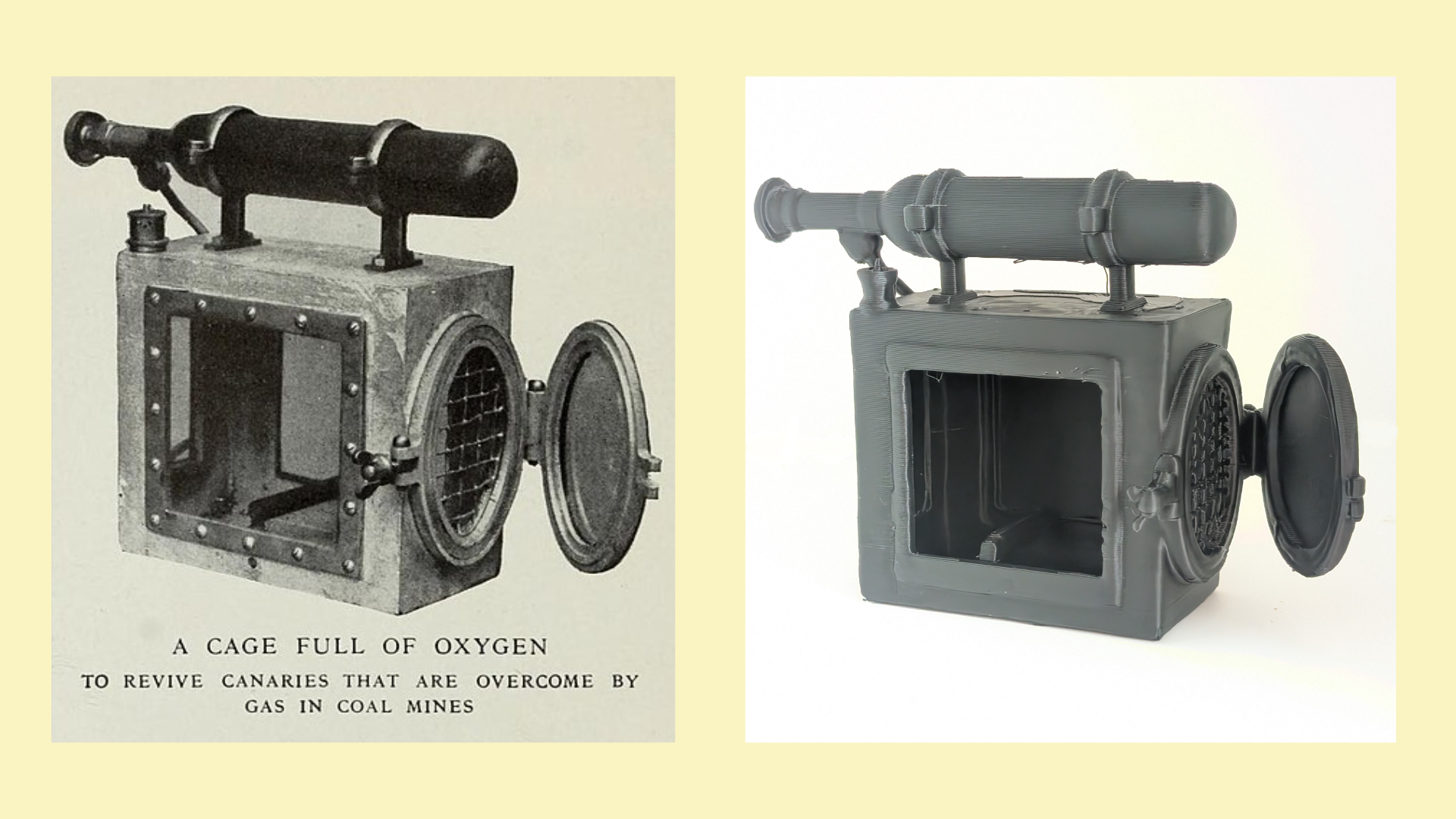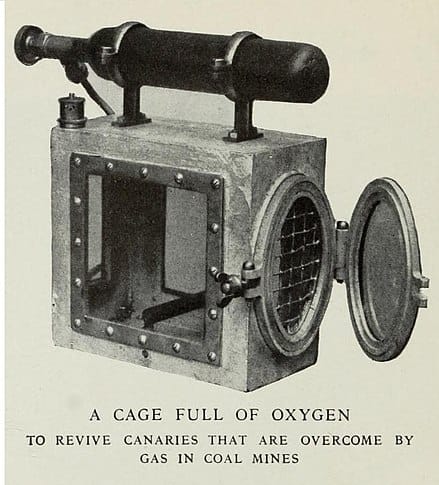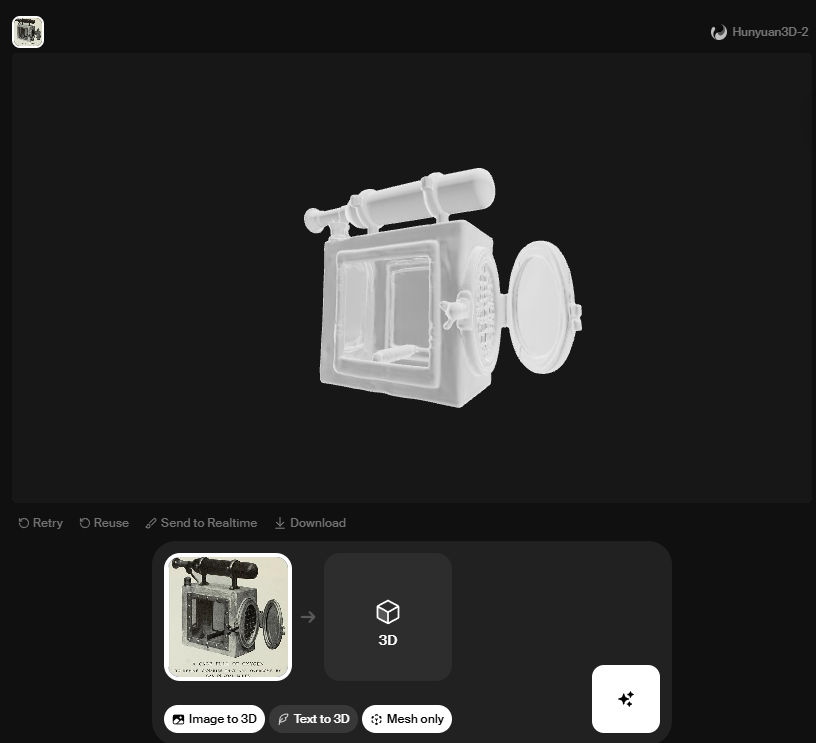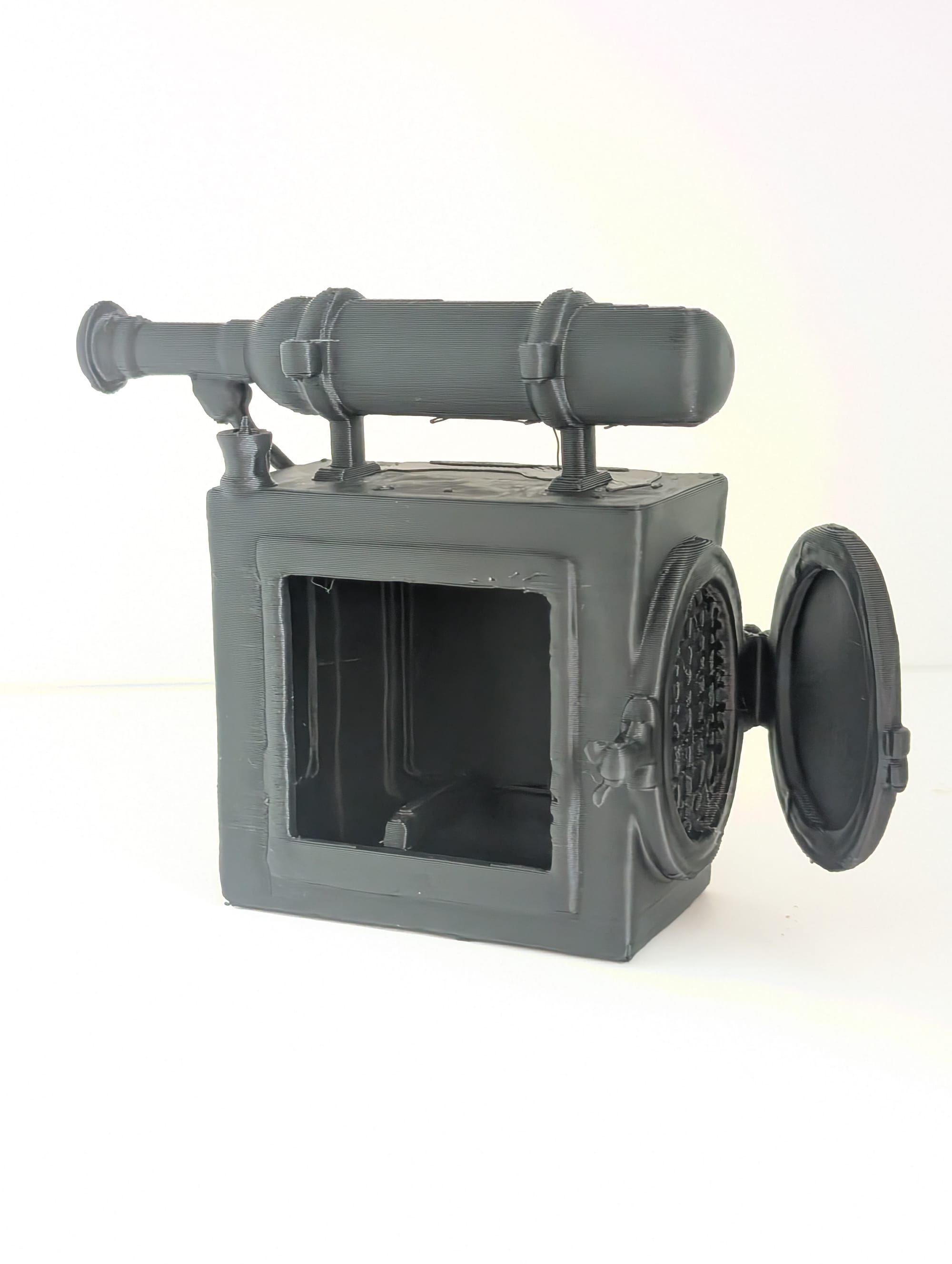
The canary in the coal mine has become a powerful metaphor for early warning systems. At Canary, we deliberately chose this name for our strategic foresight firm—we are not just reporting on futures and emerging signals, we're also getting hands on experience with new tools and working out what's good, what's bad, what's an immediate threat, and what can we relax about.
When I was seeking advice about starting Canary last year, he mentioned that "Canary" was a morbid name. As someone starting out, it made me think twice about my choices, but also sent me down a fascinating path about the history of the "canary in the coalmine" that I think is important to share and reveals some truths about people and how we approach the future.
The Canary Resuscitator: Beyond The Warning System
Many people assume that canaries in coal mines were simply sacrificial warnings—small birds expected to perish to protect human lives. In reality, the story is more nuanced and hopeful.
In the late 1800s, scientist John Haldane discovered that canaries were particularly sensitive to carbon monoxide, reacting more quickly than humans to this deadly, odorless gas. Following his investigation of an explosion at Tylorstown Colliery in 1896, Haldane developed an innovative solution that would become central to mining safety.
What Haldane created was a special cage with a circular door featuring a grill to prevent escape. When a canary showed signs of carbon monoxide poisoning, miners could close the door and open a valve, releasing oxygen from a tank mounted on top to revive the bird. This would signal miners to evacuate while giving the canary a chance to recover.
That's right, we created TINY CANARY SPACESHIPS so the canaries could LIVE!
It's a crazy looking device:

From Historical Artifact to Modern Mission
What's most meaningful about Haldane's innovation is that he "spared a thought for the canaries themselves and worked to make their job as non-lethal as possible." The resuscitator represents a profound shift in thinking—from viewing early warning systems as inherently sacrificial to seeing them as renewable resources worth protecting.
When I discovered the canary resuscitator, it immediately resonated with me as the perfect symbol for our firm. Here was a physical manifestation of what Canary stands for—not just identifying risks, but providing the oxygen needed to navigate through them.
It's important that foresight and futures thinking is a tool that helps teams feel more confident and in control of the decisions they're making day to day. When teams work with Canary, even though we're all working in unexplored territories and new frontiers in foresight, we're going to make sure the team has the oxygen (insights, operations, actions) to not only explore futures but also create them.
Embodying the Canary Philosophy
At Canary, we don't just identify emerging risks—we help organizations develop the equivalent of oxygen tanks to navigate through them. Our approach to strategic foresight is built on this principle: we care about creating systems that both warn of danger and provide pathways through it.
We guide teams through emerging futures in ways that are safe and resilient but also opportunistic. The goal isn't merely survival—it's about thriving in complex, changing environments.
When generative AI first broke through the zeitgeist and GPT-3.5 was the state of the art, I had a thought that maybe it'd be easy to use generative AI to 3D print different objects. Since Blender uses Python, why can't we figure out a way to generate meshes for printing?
Needless to say, I've been a canary in the coalmine of using generative AI for 3D printing. I've tinkered with MCPs for Blender and Fusion, or just using generative AI directly in Blender, to mixed effect. And never to a point where I felt really confident, or wanted, to 3D print what got generated.
But this week, Krea.ai launched their generative 3D tool, and there was only one thing I wanted to print: the canary resuscitator.
And I'm pretty impressed with the result! Here's what I did in Krea, I uploaded that image you saw earlier into Krea, asked for a mesh, and it spit this out:

From there, I was able to download the file as an STL, import it into Bambu Studio, and 3 hours later it printed. I didn't edit it in Blender or anything, just took the output from Krea, which was "good enough." An object I'd only read about and been inspired by, now in my hands:

Why Canary?
We are deeply committed to exploring new futures and believe that the knowledge base of futures studies, strategic foresight, and design futures provide the tools necessary to do this. Whether you need to conduct scenario planning, create trend reports, or go hands on with emerging technologies, we are here to help you navigate the futures emerging around us everyday. We'll even custom build you your own device for exploring the futures safely.
Interested? Explore our services or reach out.
